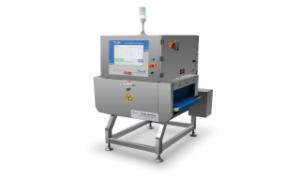Understanding Food X-Ray Inspection Systems
Food Inspection and Quality Control form a significant part of every
food processing and manufacturing business. The authorities for food
standards set strict guidelines for packaged food manufacturers which
incorporate the principles of Hazard Analysis and Critical Control Points
(HACCP). This makes the inspection of food at every stage of processing, a
critical task to maintain high quality and regulatory compliance. With the
advent of technology, many different methods have emerged like magnetic
imaging, optical cameras, metal detectors, ultrasound, X-Ray, etc. One of the
most prominent methods of food inspection is through Food X-Ray inspection
systems. Let us discuss this in detail.
X-Ray Inspection Systems:
The X-Ray food inspection systems have shown tremendous results with enhanced
detection and varied application on different kinds of products like Fresh
Produce, Packaged Foods, Pharmaceuticals, etc. X-Ray
for food inspection is safe, reliable, and easy to use.
Features:
1.
Contaminant Detection: Contaminants that may have entered the product
during its processing can be easily detected based on the standards set for the
respective product.
2.
Defects Detection: Screening of defects like packaging defects, deformities, or any
cracks can be done based on Quality Control Protocols.
3.
Dynamic Weighing: Level of completeness and fill levels can be done in packaged products
4.
Detection of Specific Elements: The presence of necessary elements can be easily
detected without the need to open packaged products.
Advantages:
1.
Low Level of Radiation: Unlike any other technology that can be used for
inspections, X-Rays can be controlled based on the type of products or category
of food items which decreases the radiation levels and keeps the food items
safe for consumption
2.
Low Maintenance: The inspection system requires minimal maintenance since these systems
can be easy to dissemble and require less supervision
3.
Hassle-free: These systems make the process of Quality Control and Regulatory
Compliance robust and seamless. They can be integrated with the manufacturing
process of the products and become a part of the processing unit
4.
Safe and Reliable: X-Ray food inspection has shown a high level of efficiency in the
detection of contaminants and defects in food products which makes them safe
for consumption and improves the overall reliability of the inspection systems
5.
Easier Compliance: The inspection systems are in complete compliance with ISO-FDA, HAACP,
and BRC standards having excellent safety systems
The use of Food X-Ray inspection systems is seen to improve the overall
time taken for Quality maintenance and inspection. The sophisticated systems are
a one-stop solution to ensure compliance with Food Safety Standards. With the
Food Safety Standards being strictly enforced in Australia, the inspection
system will ensure that the standards are met without fail.
Conclusion:
The Food X-ray Inspection system is a game changer helping in the early
detection of hazardous elements, unwanted defects, and any specification for
the respective product. The adoption of these systems will improve the quality
of products being manufactured by removing defective products from the supply
chain. This will reduce the cost of manufacturing and will improve the overall
production process and enhance consumer confidence in packaged food products. Looking
for food x-ray inspection systems or packaging
machines in Australia? Optima can be your go-to solution.




Comments
Post a Comment